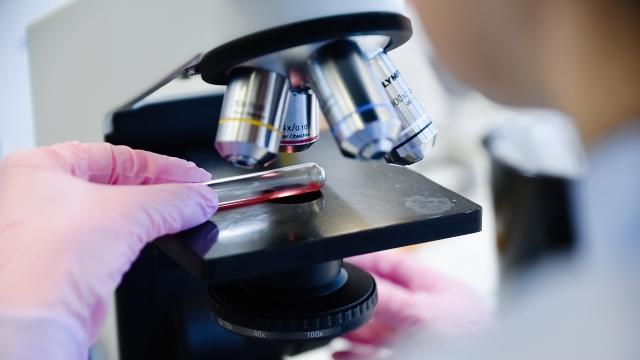
Most of us are only aware of two key aspects of the blood donation process — the actual collection of donor blood and its transfusion into those who need it. But there’s actually a lot that goes on in between those two crucial moments.
We all know that giving blood is very important, but when you actually look at the numbers, things are really put into perspective. In Australia, 31,000 donations are needed every week to keep up with demand, with a new donor needed every five minutes. One in three people will need blood products at some point in their life, yet only one in thirty people actually donate.
With donated blood only lasting 42 days, regular donors are absolutely crucial, so let’s demystify the process.
Here’s what actually happens to your blood during every stage of the journey.
Blood Donation
If you’ve been through the donation process before, you’ll have a good idea of what the first step involves. After making an appointment, you’ll arrive on the day and answer some questions about your health and medical history. This is to confirm your donation eligibility.
The actual donation process only takes about ten minutes, after which you get to relax in the refreshments area with a complimentary cool drink and snacks.
Your donation is logged into Lifeblood’s management system which tracks it all the way through its journey from collection to the patients who need it. The blood is then packaged and sent to an Australian Red Cross Lifeblood processing plant in Sydney, Brisbane, Melbourne or Perth.
Processing, testing and storage
Once your blood is unpacked, it’s sorted by the kinds of products your blood can be turned into. This is determined by how you answered your questionnaire prior to donation, how long it took your donation to reach the processing centre, your blood type and what products are needed on that day. The samples collected with your donation will be tested for your blood type and infections that can be passed on in blood, including hepatitis B and C and human immunodeficiency virus (HIV).
All donations are then placed in a centrifuge where they’re spun at 4,200 revs per minute to help separate the blood into three different components — plasma, platelets and red cells. It’s then put into another machine to aid the separation process further.
Your platelets might be combined with the platelets from 3 other blood donors to make up a ‘platelet pool’ which is a single dose of platelets that can be given to patients who need them.
When it comes to storage there are different methods for each product. Red cells are stored in refrigerators at 6ºC, plasma is frozen and platelets are stored at a controlled room temperature on shelving that constantly moves to stop them from clumping together.
Distribution and transfusion
A single blood donation will often go on three different journeys based on its components. Your plasma might be used by one patient, your red cells by another and your platelets might go to a third patient. Platelets mainly go to cancer patients and plasma is often needed by those with burns or immune deficiencies. Red blood cells often go to a variety of different patients.
Orders from hospitals and medical facilities come in via an online ordering system and the products can be dispatched by staff immediately when needed urgently. Some orders can even travel from interstate facilities if needed.
How can I donate blood?
If you’d like to give blood, booking an appointment is easy. Visit Lifeblood to check your eligibility and book your donation today. Booking an appointment between now and the end of November will coincide with their True Colours campaign. This means when you donate, you’ll get a limited-edition bandage designed by one of six great Aussie artists — Beci Orpin, Brian Robinson, Chris Nixon, Gemma O’Brien, Georgia Perry and Kenny Pittock.
You can find out more about the artists here.
It’s a great way to give back and show your true colours.
